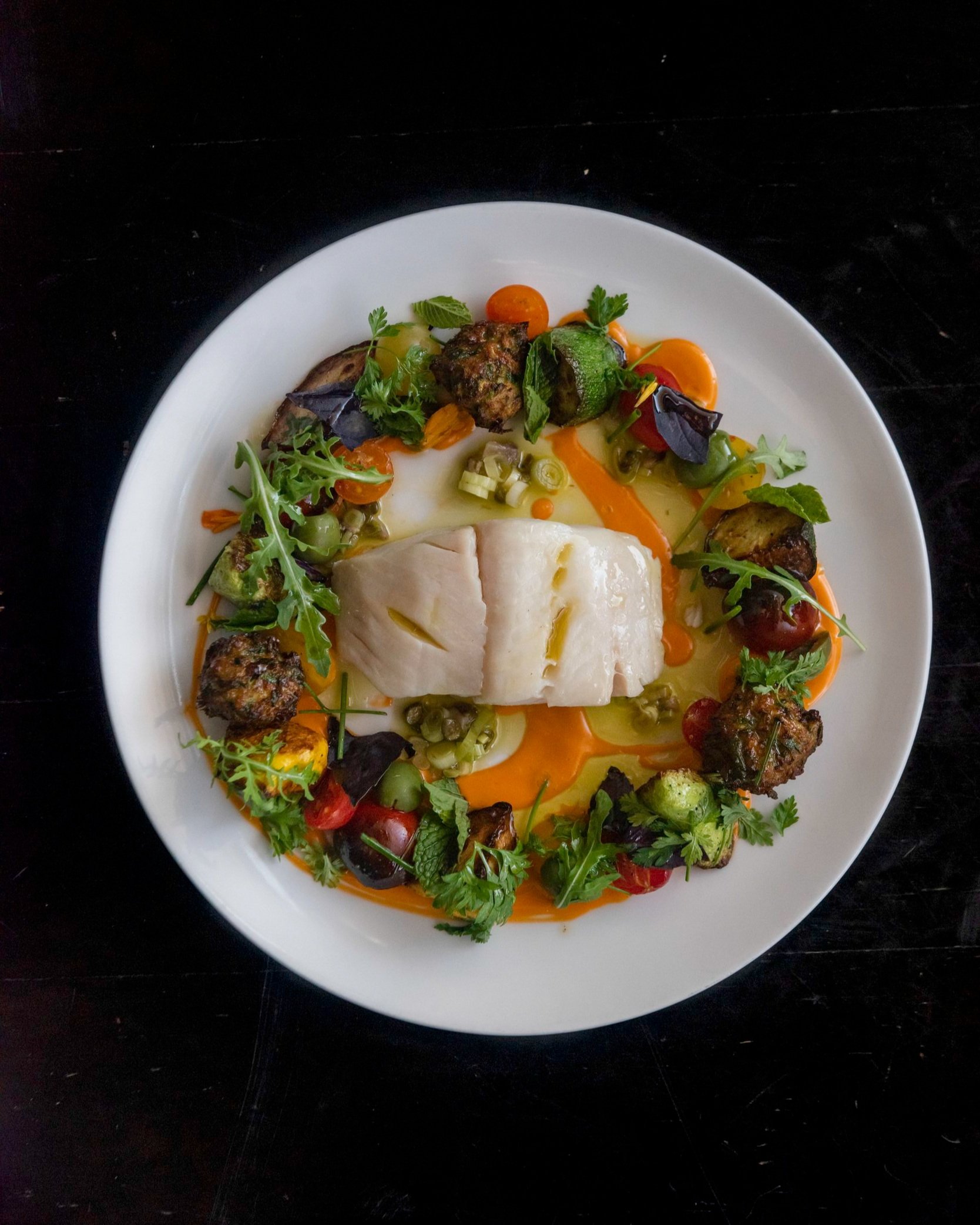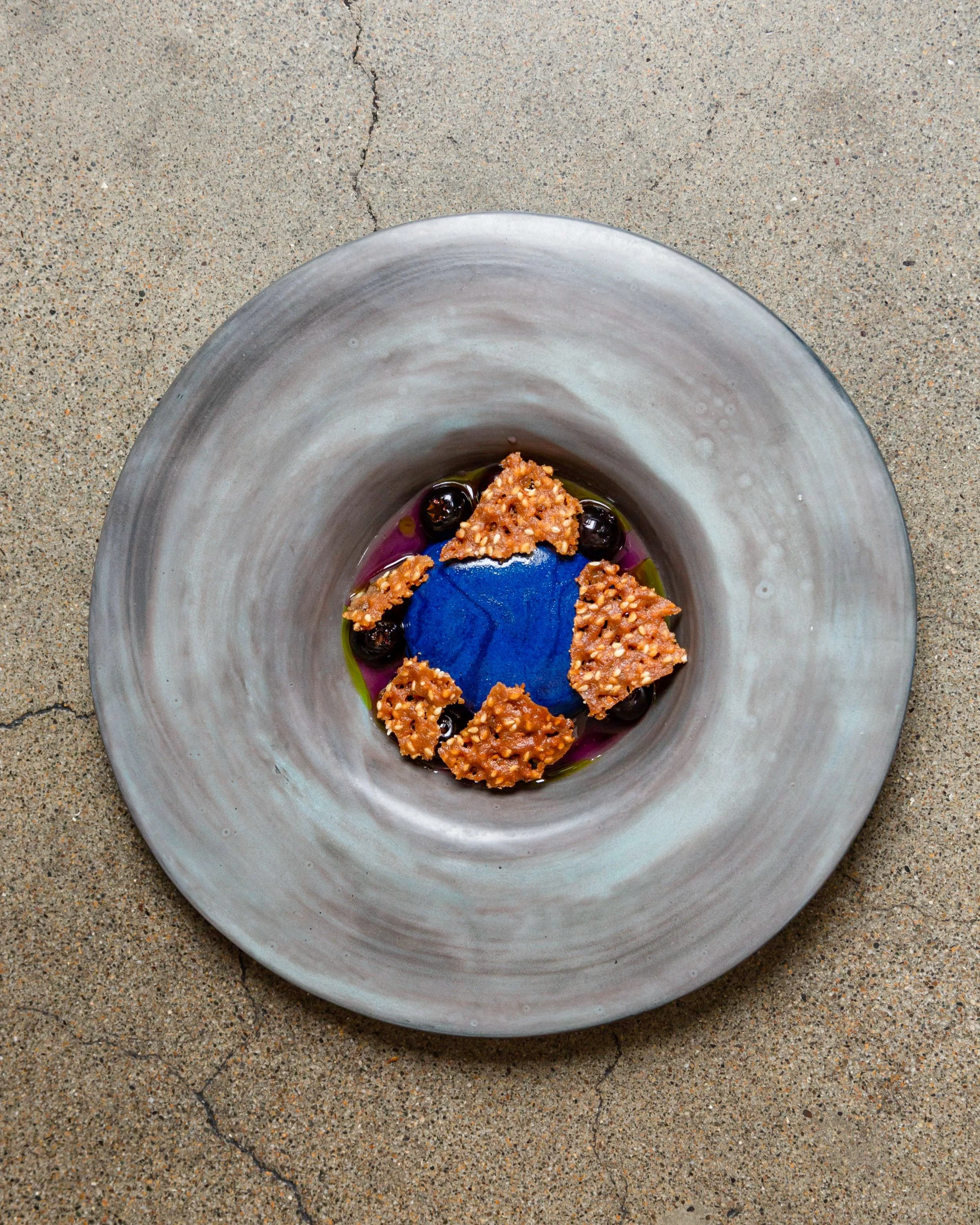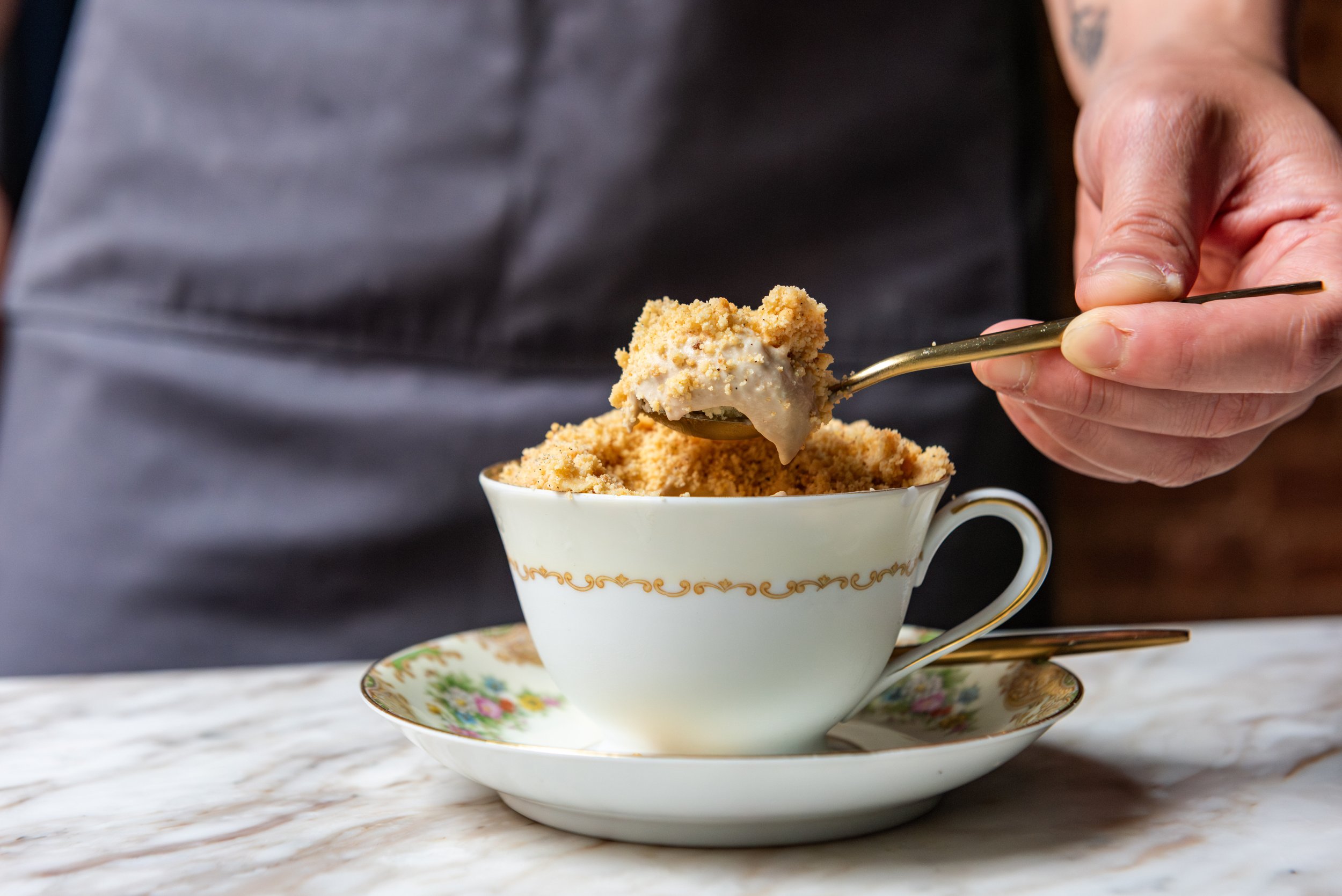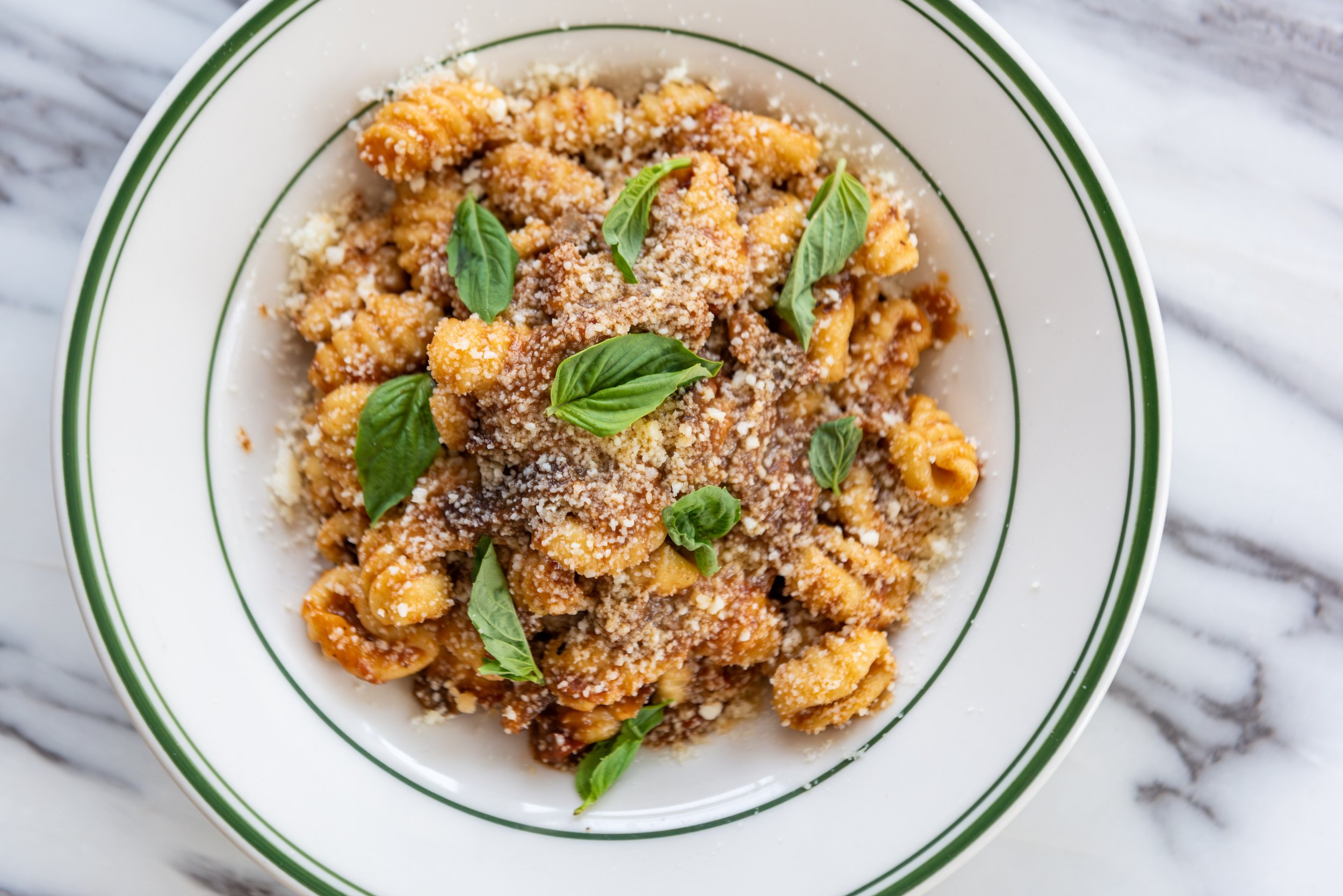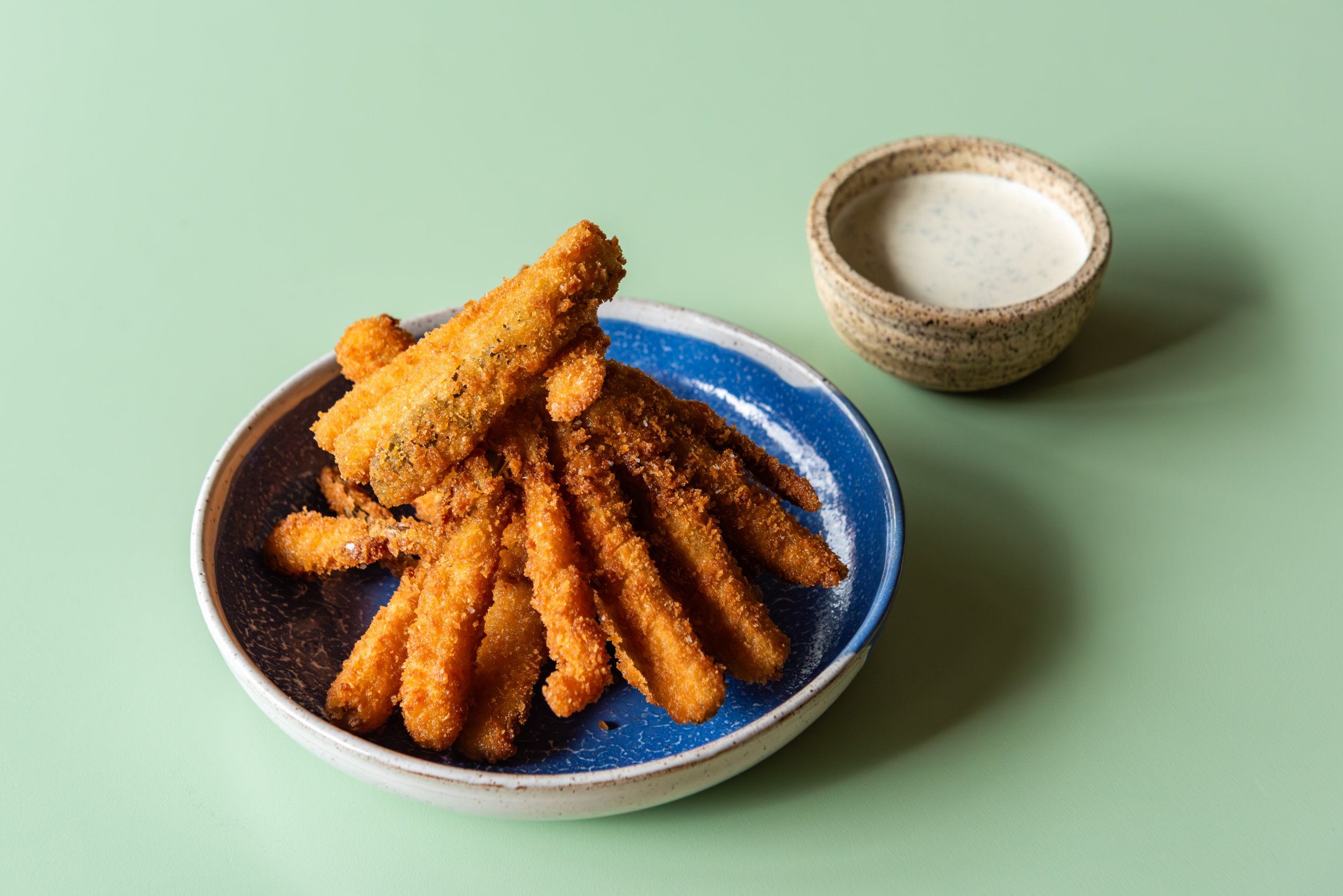2022 San Francisco-Oakland Kitchen Notebook
An in-depth look at some of our favorite dishes and cocktails from our time on the ground in the Bay Area.
Salt Baked Black Cod
In 2014, Chef Nick Kelly of AltoVino traveled through 17 of Italy’s 20 regions, from the mountains of Alto-Adige to the vineyards of Sicily. “I started off in the North, where most people speak German, where there are lots of twists on Austrian food,” Kelly remembers. “Next was Piedmont, which was much more French and Swiss influenced, then we got to traveled down the coast from there. We left the butter and cream behind, and found olive oil and seafood.” Kelly came back with techniques and philosophies from his travels, including a whole fish baked-in-crust technique he learned while working in the resort town of Milano Marittima in Emilia-Romagna. His version (recipe here) uses buttery black cod fillets from Eureka, CA, which Kelly blankets in a vibrantly green and herbaceous pocket of salt, egg white, and flour, and blasts in a convection oven. “We bring it out to the table, and it smells delicious,” he says. The server cuts open the crust, revealing a flavor-packed and flawlessly cooked piece of fish. The plate is finished with crispy zucchini fritters, a cherry tomato passato, a punchy spring onion condimento, briny salt-cured anchovies, torn Castelvetrano olives, and a bright herb salad. Kelly’s black cod is a beautiful, humble interpretation of his Cal-Ital cuisine, highlighting regional cooking techniques and the bounty of California’s fields and fisheries.
Grilled Abalone
“This dish got me excited about summer,” recalls Sorrel Chef Felix Santos. “Whether they don’t know abalone, or have had a bad experience, it’s always exciting to provide a new perspective.” The key to unlocking the mollusk’s potential begins with a method that Santos adapted from his time at Atelier Crenn. When the live abalone come in, he gives them time to relax—after all, “a stressed animal doesn’t eat well,” says Santos. After a careful shuck, the abalone is trimmed, then tenderized, which, according to Santos, is all about feel. “Wrap the abalone in a thin kitchen towel and hit it with the wooden part of an offset spatula,” he instructs. “You find the balance of starting with a lot of force and then decreasing the pressure from there. Feel out the abalone, feel where it's stiff, give it another round. From there it's just feeling how to get it soft without cracking or breaking it.” Santos grills the abalone over binchotan, and serves it with colorful additions from the market: umami-forward tomato water dashi, sweet red pepper jus, charred pattypan squash, a tomato salsa macha, and crispy nopales. The result (recipe here) is a bright, meaty, briny bite that shows just how valuable a trip to San Francisco’s farmers markets can be.
Black Garlic Custard
As the presiding Pastry Chef at Turntable, the rotating Chef-residency operating out of Lord Stanley, Harper Zapf has the challenge of making his menu complement the current chef-in-residence. So when Chef Lucho Martinez of Restaurant Em in Mexico City was focusing on Asian ingredients and techniques, he pushed Zapf to work beyond his comfort zone. “We were really vibing, making dishes on the fly,” recalls Zapf. “One night [Lucho] looked at me and was like ‘this is a little too easy for you, why don’t you make a dessert for me with black garlic.’” Zapf knew he needed richness to mellow the black garlic, fruit and acidity for balance, and something crunchy and nutty to tie the textures together. For the fruit component, he poaches blueberries, and doubles down with a vibrantly blue and purple mirror glaze that uses the poaching liquid. “When you’re constantly using things that you’ve already made, you fortify flavors.” This complements a rich and creamy black garlic custard, as well as Zapf’s grandmother’s sesame tuile cookie, which adds salt, nuttiness, and crunch to the dish. The dessert is a playful representation of Zapf’s style of on-the-fly creativity, powerful flavors, and fun presentation, all grounded in a strong technical foundation.
Pork and Beans
At Penny Roma, Chef Rachel Orner is always looking for new ways to create fun, delicious dishes using the restaurant’s wood-fired hearth. Inspired by memories of grilling during the humid Philadelphia summers, Orner got to work on developing a “pork and beans” dish, interpreted through a contemporary Italian lens. With a single-cut pork chop on the made-to-be-shared “Dinner Party” tasting menu, she thought, “let’s make it bigger, shingled, and bring it to a backyard barbecue.” And while the brined and slow-grilled pork chop would be a knockout alone on a plate, the set elevates the chop to a transcendent bite (recipe here). First, a decadent, creamy white bean purée, perfumed lightly with garlic and lemon Agrumato, is swiped onto the plate. Orner follows with the shingled pork chop, and tops that with the dish’s kicker: a rich and bright peperonata, using farm-fresh Jimmy Nardello, lunchbox, and gypsy peppers. “It has a lot of tang [and] a decent bit of vinegar,” says Orner. Finished with chicken jus, Castelvetrano olives, and crunchy Marisol salt, Orner’s pork chop dish evokes an American grill-out through Penny Roma’s Italian eyes. “The dish is focused on the hearth, traditional Italian flavors, and beautiful California produce,” she said.
Seaside Ambrosia
After sipping meloncello on the Amalfi coast on a summer vacation, Bartender Emily Freeman felt inspired to incorporate the lusciously creamy and fruity melon liqueur into her arsenal once home at Oakland’s Mägo. Rather than source an imported meloncello, Freeman decided to take full advantage of peak season California fruit by making her own. To create a liqueur with big melon flavor and a soft orange hue, Mägo’s chef Mark Liberman recommended locally grown Ambrosia melons. “Traditionally, meloncello from Italy is made with cantaloupes, but the Ambrosia is just a little more intense, sweeter, juicier.” The flesh of the melon is infused into vodka for three to seven days before being spun into a thick purée that’s plenty boozy, but lets the fruit flavor shine. For “a more tropical vibe,” Freeman finishes off the mixture with coconut milk for a creamy texture. To incorporate the liqueur into a cocktail (recipe here), she reaches for another ingredient with roots in the Mediterranean: Mastic Tears Dry liqueur. The Greek tree sap distillate has herbal notes with earthy and light honey-like sweetness, complementing the Ambrosia liqueur with fresh complexity. Lime juice and simple syrup round out the daiquiri-style build. The drink is finished with a sprig of mint, making for a fresh sip that bridges the Amalfi Coast with the San Francisco Bay.

